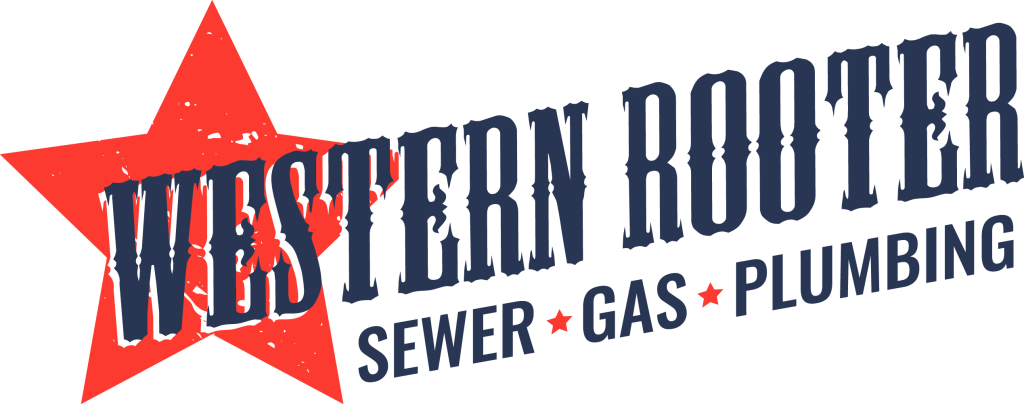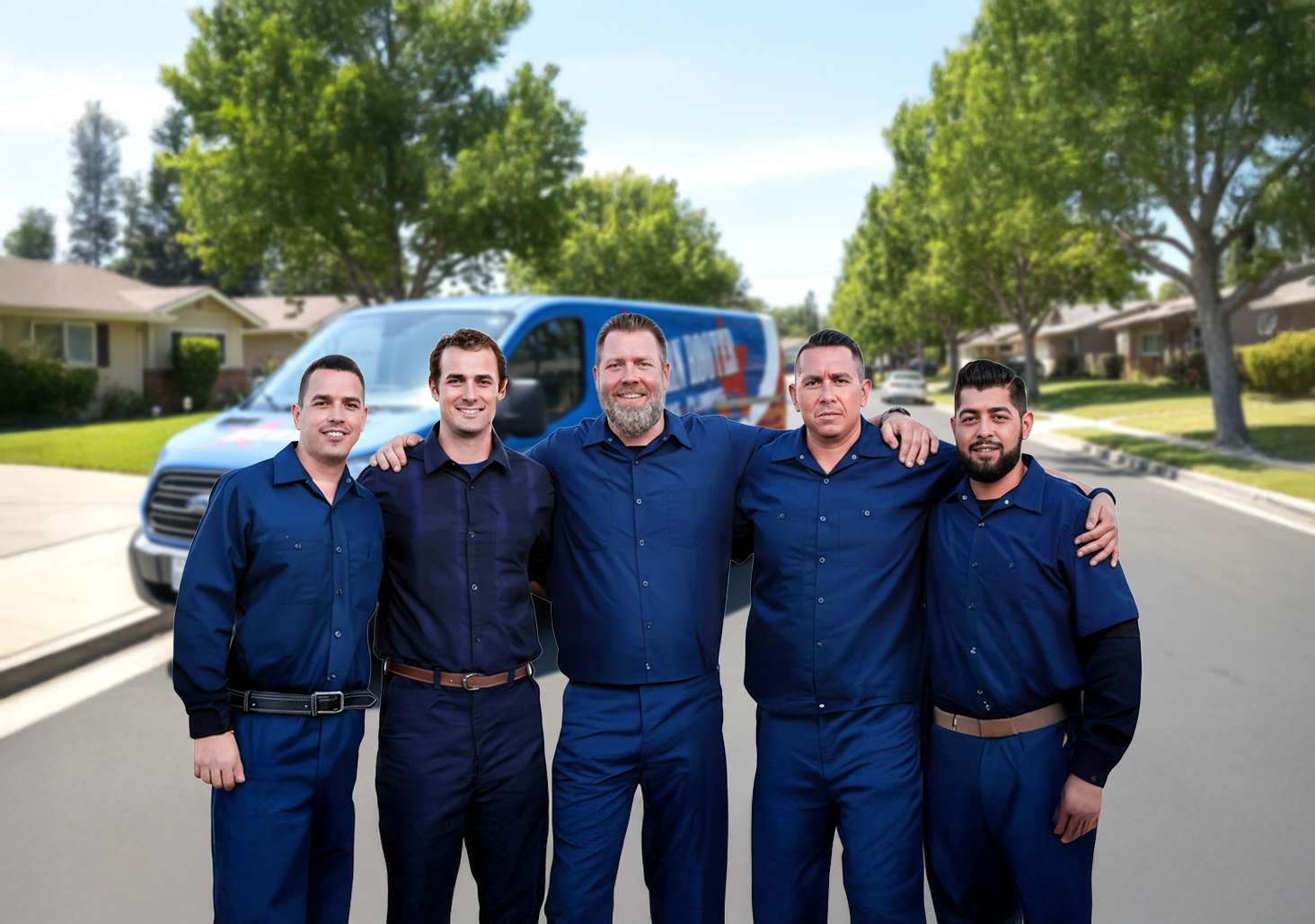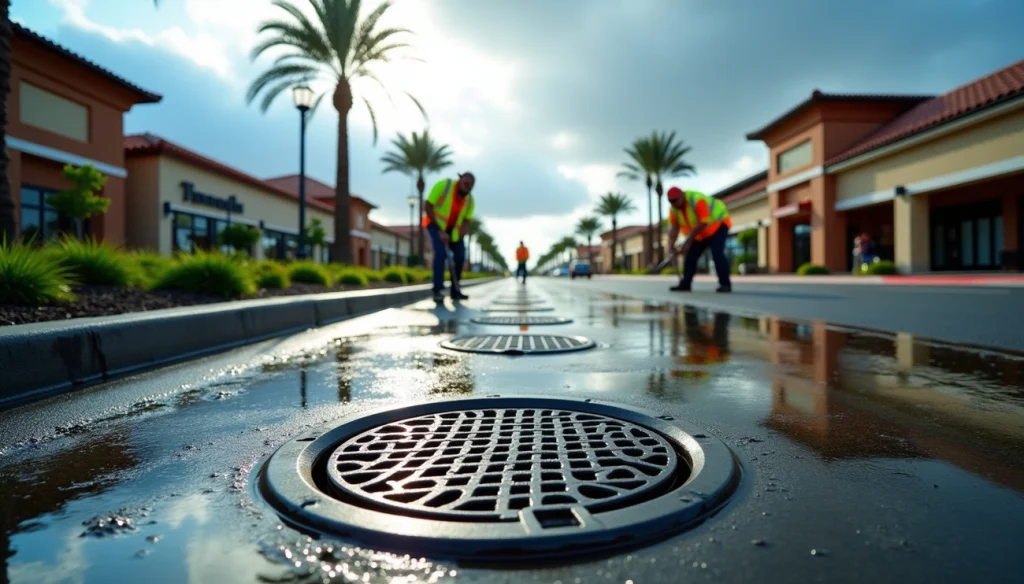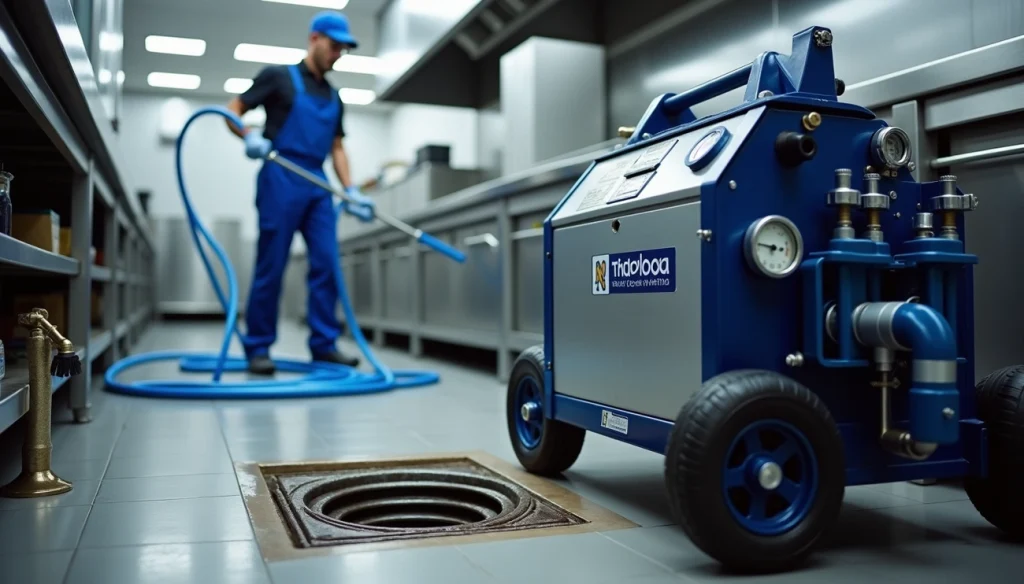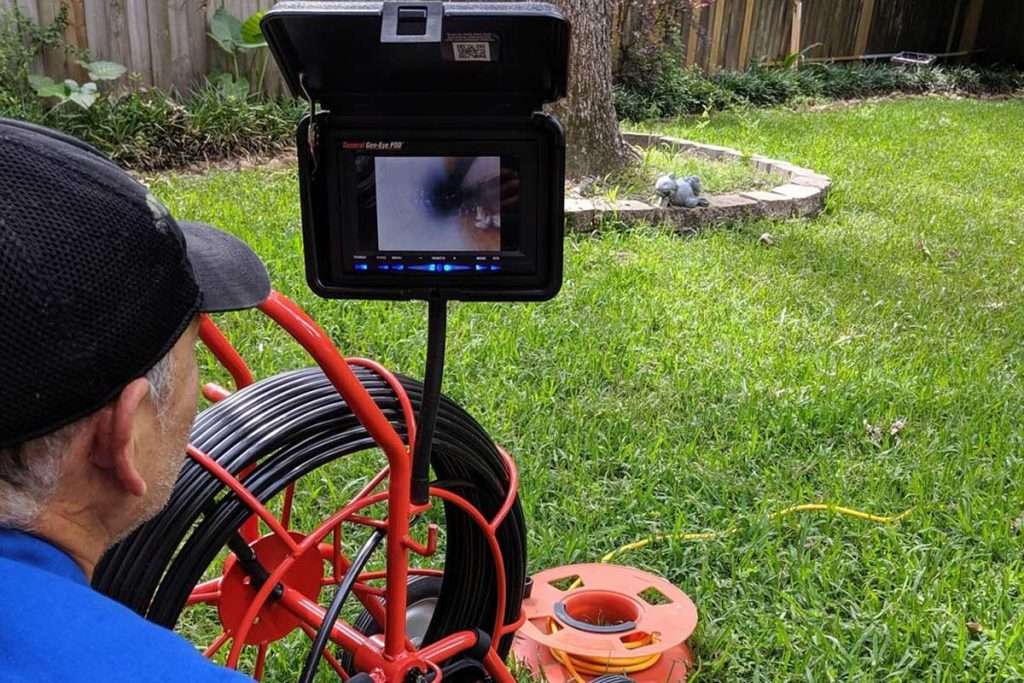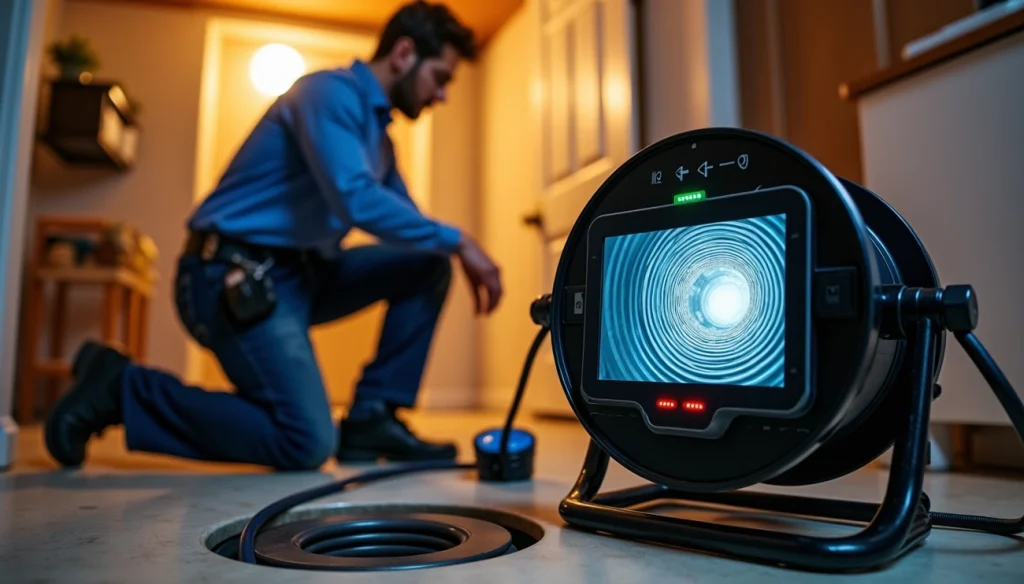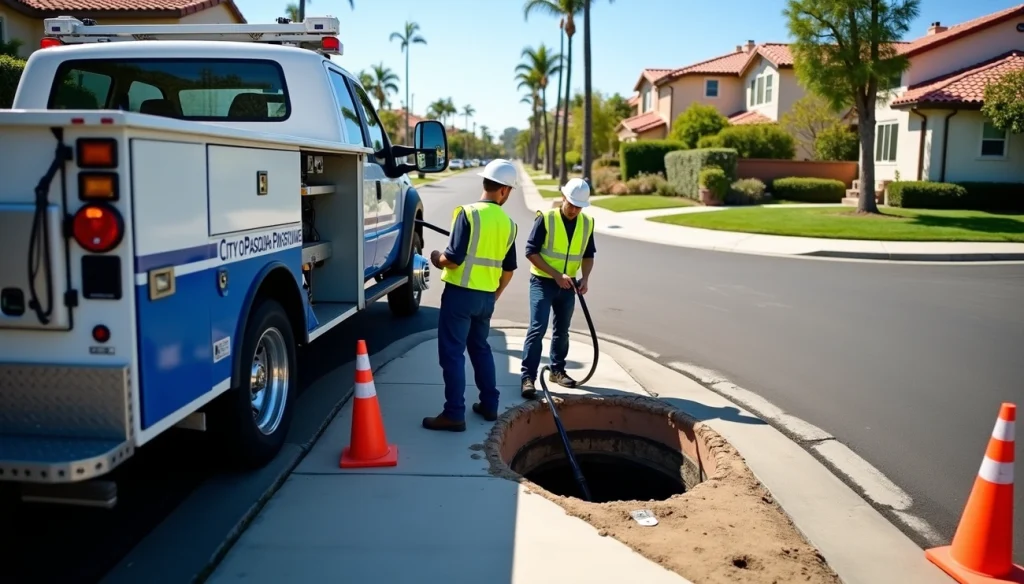A toilet’s refusal to flush doesn’t always mean there’s a clog. Low-flow toilets struggle with weak flush pressure, which makes them the primary cause of recurring flushing problems.
Several factors can prevent a toilet from flushing properly without a clog. The tank might lack sufficient water, or mineral deposits from hard water could build up. Houses more than 30-40 years old face these problems frequently because their pipes corrode and plumbing systems become outdated.
Simple fixes can resolve most toilet’s flushing problems. A quick check of your tank’s water level or the flapper’s operation might solve the issue. This piece shows you how to identify and repair your toilet’s flushing problems, whether you’re dealing with a weak flush or partial drain.
Understanding Why Your Toilet Won’t Flush
Your toilet won’t flush even after pressing the handle? Most homeowners grab their plunger right away, thinking it’s clogged. A clog might not be the problem at all – several internal parts could stop your toilet from flushing properly.
Common misconceptions about toilet problems
People often think clogs cause all flushing problems. Blockages happen a lot, but they’re just one of many possible issues. Many property owners blame their low-flow toilets whenever flushing problems keep coming back.
The first water-saving toilets from the 1990s got a bad reputation because they didn’t work well. People thought these toilets clogged too much, needed multiple flushes, and damaged their home’s plumbing. These early problems created myths that still make some homeowners hesitate to buy modern efficient models.
There’s another reason why people avoid efficient toilets – they think less water means less flushing power. That’s not true. Today’s high-efficiency toilets use smart technology and better designs like pressure-assisted flushers and improved bowl shapes to create powerful flushes while using less water.
On top of that, people think flushing creates a vacuum that could harm their plumbing. This idea has no truth to it – toilets can’t create any vacuum.
Some homeowners believe not flushing every time is more hygienic. Science shows something different – each flush creates a “toilet plume” that spreads tiny droplets, which could spread more germs than if you had flushed.
How a properly functioning toilet should work
You’ll spot problems easier if you know how a normal flush works. A toilet that works right follows these simple steps:
- You press the handle, and the flush lever arm lifts the flapper valve with a chain.
- The flapper moves up, letting water rush from the tank into the bowl through rim jets and siphon jets.
- This water creates pressure that pushes waste through the trap and down the drain pipe.
- The tank empties and the flapper closes, sealing the flush valve.
- The fill valve starts working, refilling both tank and bowl through different tubes.
- The float rises with the water level and tells the fill valve to stop, finishing the cycle.
All these parts must work together perfectly. The flapper needs a tight seal to keep water from leaking into the bowl. The chain between handle and flapper should have just the right tension. Water must stay at the right level – about 1 inch below the overflow tube – to flush properly.
A single broken part can stop your toilet from flushing, even without a clog. The flapper might close too fast during flushing, which means not enough water gets through. Low water in the tank or a broken float can also make your flush too weak.
Now you know how your toilet works, you can figure out why it’s not flushing right. Call Western Rooter today to get a free estimate if you can’t fix those stubborn toilet problems!
Checking the Toilet Tank Components
The toilet tank lid hides several components that work together to create a proper flush. Your toilet might not flush properly even when it’s not clogged. The problem usually lies in one of the tank mechanisms. Let’s get into each part to find what stops your toilet from flushing the right way.
Inspecting the flapper valve
The flapper valve is a rubber piece at the tank’s bottom that creates a vital seal. This seal keeps water from flowing into the bowl all the time. Take a look at your flapper and check for signs of wear like warping, mineral deposits, or discoloration. You should replace the flapper if you spot these signs, especially if it’s more than five years old.
A quick way to test your flapper is to add food coloring or dye tablets to the tank water. Don’t flush for about 15 minutes. Your flapper needs attention if colored water shows up in the bowl.
Run your finger around the flush valve seat where the flapper sits. The flapper won’t seal properly if you feel any bumps, cracks, or rough spots. The surface needs to be smooth and even to work right.
Examining the flush chain
The chain between your flush handle and flapper needs just the right adjustment. It should have about 1/4 to 1/2 inch of slack to work properly. Too much slack means weak flushes because the flapper won’t lift all the way. A chain that’s too tight might stop the flapper from sealing after you flush.
Look out for:
- Kinked or twisted chain that won’t work right
- Chain that’s too long and gets stuck under the flapper
- Solid connections at the flush lever and flapper
You can fix the chain length by moving it to a different link or carefully bending the flush lever arm.
Testing the fill valve
The fill valve puts water back in the tank after flushing. Problems with flushing often start here. Check your fill valve for:
- Age signs like discoloration or fading
- Calcium or mineral buildup on the surfaces
- Rust spots above the waterline or on the cap lever arm
- Water supply connector condition – replace if it’s over five years old
Watch how your toilet refills after flushing to test the fill valve. The water should stop at the right level. Your valve needs work if it won’t shut off or struggles to fill the tank.
Assessing water levels in the tank
The right water level makes a big difference in flushing power. Water should stop about 1/2 inch below the overflow tube’s top. Your tank’s water level needs fixing if it runs into the overflow tube or sits way below it.
Here’s how to adjust water levels:
- Ball float systems: Turn the fill valve’s adjustment screw clockwise (lower) or counterclockwise (higher)
- Cylinder float systems: Squeeze the float clip and move the float up or down
- Newer float cup models: Find and squeeze the adjustment clip while moving the cup
Your float mechanism might have issues if the water level isn’t right. Give the float a gentle shake – if it has water inside, replace it right away.
Need help? Western Rooter offers free estimates if you’ve tried these fixes and still have problems!
Diagnosing Issues with the Flush Mechanism
Your toilet might give you trouble even when all tank parts work perfectly. A toilet that won’t flush but isn’t clogged shows specific signs that need careful checking. These symptoms will help you figure out exactly what needs fixing.
Weak flush pressure problems
Your toilet’s flushing power can weaken due to several reasons. A well-working toilet creates a strong, swirling motion that clears the bowl quickly. Here’s what could be wrong when that doesn’t happen:
- Clogged rim jets or siphon jets: Mineral buildup can block the small holes under the rim where water flows into the bowl. These blockages stop proper water circulation and result in a weak flush. You’ll see water just trickling into the bowl instead of flowing strongly.
- Low water level in tank: The flush power drops right away if water levels drop more than 1 inch below the overflow tube. This means not enough water enters the bowl during flushing.
- Flapper closing too quickly: The tank won’t empty completely if the flapper shuts too soon. Most toilets need just about ½ inch of chain slack to work right.
Partial flush or incomplete emptying
Partial flushes leave waste behind despite having good pressure, unlike weak flushes. This happens because:
- Water doesn’t fill the bowl’s highest capacity before flushing
- The refill tube fails to supply water down the overflow pipe correctly
- Something partially blocks the toilet trap or waste pipe
You can check for partial flush problems by pouring three gallons of water straight into the bowl. A partial clog likely exists if water doesn’t go down within a couple of seconds. If it does go down, the problem lies between your tank and bowl, possibly with the flushing jets.
Strange noises during flushing
Your toilet’s sounds can tell you what’s wrong:
Gurgling or bubbling: These noises usually mean trapped air pressure exists somewhere in the drain line. Clogs or blocked vent pipes cause this pressure, which releases with distinctive gurgling sounds from your bowl.
Hissing: A constant hiss after flushing means water leaks from tank to bowl. This happens when the flapper valve won’t seal properly. Check if your float rises above the overflow tube if you hear hissing while the tank fills.
Foghorn noise: Your toilet shouldn’t sound like a ship’s horn. This scary noise typically comes from a loose washer in the float valve, especially in older models.
Rumbling: You might hear loud rumbling from other rooms when drain lines or vent stacks aren’t secured properly.
These different sounds give important clues about your toilet’s plumbing system. Finding the exact noise pattern helps you spot potential issues before starting repairs.
Call Western Rooter today to get your free estimate if these steps don’t fix your toilet flushing problems!
Fixing Toilet Vent and Drain Problems
Your toilet’s flushing power depends on more than just the tank components. The vent and drain pipes play a vital role in how well your toilet flushes. Problems can persist even without visible clogs when these areas get blocked or build up debris.
Signs of a blocked vent pipe
Your home’s plumbing system has vertical vent pipes that run through the roof. These pipes maintain proper air pressure for drainage. A blocked vent shows these warning signs:
- Air bubbles rise through your toilet bowl (all but one of these bubbles appear when not flushing) because your plumbing system needs air
- Bowl water levels fluctuate without anyone using it
- You hear gurgling when flushing or using nearby fixtures
- Drains release foul, sulfurous smells
- Multiple fixtures throughout your home drain slowly
A blocked vent stops air from entering your plumbing system. This creates negative pressure that disrupts your toilet’s normal water flow.
How to check for partial drain blockages
You can spot a partial drain blockage by following these steps:
- Pour three gallons of water straight into the bowl
- Watch how it drains – a partial blockage exists if water doesn’t drop within seconds
- Look for water backing up in nearby fixtures during flushing
Many things cause partial blockages. People flush inappropriate items, use too much toilet paper, or deal with mineral buildup. Tree roots can even grow into sewer lines.
Addressing mineral buildup in pipes
Hard water’s dissolved minerals collect in pipes over time and affect flushing. White or rust-colored rings at the waterline or stains at the bowl’s base signal mineral deposits. The water jets under the toilet rim might get clogged with limescale, leading to weak flushes.
A simple fix starts with pouring one cup of distilled white vinegar into the tank’s overflow tube. Let it work for thirty minutes before flushing. Tough buildup might need commercial cleaners like Lime Away or CLR. Remember to wear gloves and keep the area ventilated.
A water softener offers the best long-term solution to stop mineral deposits from coming back.
Need help with toilet flushing problems? Call Western Rooter now for your free estimate!
Advanced Troubleshooting for Persistent Issues
Your toilet might need a deeper look at mechanical problems if it won’t flush right even after you’ve checked the obvious stuff. Some toilets refuse to flush properly though they’re not clogged, even after you’ve looked at tank parts and drain systems.
Checking for toilet trap problems
The toilet’s base has an S-shaped curve called the toilet trap. This trap holds water that blocks sewer gasses from getting into your home. Here’s what to watch for with trap problems:
- The bowl’s water level drops unusually low, that shows problems with the trap’s vacuum seal
- Air bubbles come up through the bowl without flushing, which means the drain line needs air
- Nearby fixtures make gurgling sounds as they drain, showing poor venting
Your toilet likely has clogged or improper venting if bubbles rise through the bowl or water levels keep changing. These problems usually need a professional plumber’s help to explain why your toilet won’t flush properly without a clog.
Addressing siphon jet blockages
A small opening at the bowl’s bottom, called the siphon jet, creates the strong push needed to flush well. Minerals and scale can block this important passage over time.
Weak flushes with normal water levels usually mean clogged siphon jets. You’ll find this hole at the bottom front of your bowl. The jet needs cleaning if the hole looks smaller than it should or shows buildup.
Many homeowners get their flush power back by carefully removing calcium deposits from the siphon hole. CLR products can help break down tough mineral buildup if you follow the manufacturer’s directions.
When to replace internal components
Toilet parts don’t last forever. You should replace them if:
- Flappers warp or break down (new ones needed every 4-5 years)
- Fill valves make noise or fill slowly after cleaning
- The toilet runs non-stop after adjustments
- Supply lines get brittle (replace every 10 years)
A complete toilet repair kit works great to fix several problems at once. It helps stop flapper leaks that waste up to $600 in water each year.
Contact Western Rooter today to get a free estimate!
Conclusion
Most toilet flushing problems aren’t as complicated as they seem, and you can fix them easily. Your toilet’s internal components, water levels, and clean jets play crucial roles in resolving common flushing problems without calling a professional.
A good maintenance routine will prevent issues from coming back. You should check flappers every year, remove mineral deposits, and fix unusual sounds before repairs get pricey. Signs of vent blockages or partial drain clogs need quick attention to prevent bigger problems.
DIY solutions work for many toilet problems, but some situations need professional help. Unusual gurgling noises, multiple slow-draining fixtures, or weak flushes that won’t improve after troubleshooting point to serious plumbing issues. Contact Western Rooter today to get a free estimate when you face persistent toilet problems that common fixes can’t solve.

